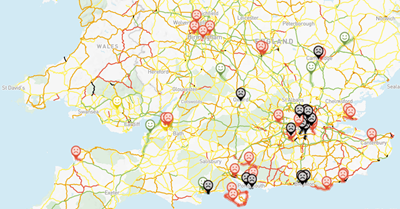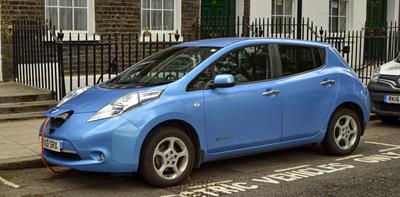
New cars have a way of edging up in price. Getting the better radio, the bigger wheels or sportier seats costs just that little bit more. One of the best ways to afford the extras is to get a better price for your old car.
You might find a buyer by just sticking a ‘for sale’ notice on your car window, but it’s worth considering the many other options available to you. If you find the prospect of selling your car a bit daunting, some time spent preparing yourself will give you a bit more confidence - and you’ll probably get a better price.
First, let’s cover a few basic things to think about:
1. Sell at the right price
The internet makes this quite simple. Search for similar models of a similar age online. Try car valuation tools on sites such as Parkers or What Car?, or look on eBay to see how much cars have been sold for.
Since a buyer is likely to try and knock your price down, build in a margin to allow for haggling - and plan how you’ll respond when the buyer tries their luck. Another good tip from RAC is to try to list your car below a ‘milestone’ number - for example, people searching by price might set a limit of £5,000.
2. Get your paperwork ready
A buyer will want to see paperwork. So, dig out your V5C (logbook) - a red paper document that shows who the registered keeper of a vehicle is - to prove you’re the registered owner.
The same goes for MOT certificates, albeit MOT history can now be checked online. In fact, if your vehicle is coming up for its MOT, it’s worth getting it done before selling as it will give the buyer some peace of mind and increase your chances of getting a fair price.
If you have old service receipts and all the right stamps in your service book then have those to hand too, providing further evidence your car has been well maintained.
3. Give it a facelift
You may be happy to drive around in a mud-encrusted vehicle, with old sweet wrappers wedged between the back seats, but buyers won’t be so keen.
Giving your car a good clean, inside and out, is essential. As well as showing your vehicle in its best light, it also gives the impression you’re a caring owner who looks after their car.
Depending on the age of the car, and how much you expect to get for it, it may even be worth spending some money to have any cosmetic damage fixed, scratches in the paintwork repaired, or scuffed alloy wheels refurbished.
Some new car mats can smarten up an interior that’s looking a little tired.
If your vehicle has a private (personalised) registration number that you want to keep, you must apply to remove the registration number before you sell it.
4. Be honest
While you definitely don’t want to undersell your car, do always describe it accurately so you don’t mislead buyers. As well as just being the right thing to do, you really don’t want your buyer coming back to you complaining they’ve been mis-sold.
5. Sort out any outstanding payments
If you still have finance outstanding on the car you want to sell, then you must inform the finance company and ask how much you’ll need to pay them. This is called the settlement figure. You may also have to pay early repayment and administration fees.
No £25 admin fee
When you update your policy online, e.g. amend driver, address or car details.
Different ways you can sell your car
1. Sell privately
It often requires a bit more time and effort to sell privately, but you might get 10% to 15% more for your car than you would from a dealer, according to the Money Advice Service.
There are lots of different ways of doing this, from simply telling family and friends you’re selling your car to using social networks, like Facebook.
Next could be a classified ad in a specialist magazine or website - particularly if you’re selling a classic, sports or performance car.
Or you could use a more general sales site like Gumtree or eBay. If you do use an auction site like eBay, be wary of bidders with no prior purchase history, or without positive feedback.
Whichever route you decide to take, you’ll need to accurately describe your car, providing information about the model and specification, age, its mileage, length of MOT and service history, as well as useful details like ‘only one owner’.
Provide a good selection of photos, taken in the daytime, including interior shots and close ups.
A potential buyer will want to see the car and try it, in which ask for evidence that they’re insured to do so. If you’re worried about a stranger visiting your home, consider having a friend or relative there with you.
Payment
Sadly, car sales attract scammers and crooks. So, approach this stage of the sale with a little caution.
If you have a cash buyer, count out the notes carefully. If they want to pay by bank transfer or cheque make sure you have the money before handing over the keys. If it doesn’t feel right, don’t do it.
And then give the buyer a receipt. It doesn’t need to be fancy - you can write one out or find a template online.
2. Part exchange
Part-exchanging, when you trade in your current car to help pay for a new one, is a nice and convenient option. No ads, no visitors to your house and you don’t even need to clean it. However, in exchange for the ease of simply handing your keys over to the dealer, you might get less money for your old vehicle than through a private sale.
Which? advises you focus on the ‘price to change’, which is the difference between the part-exchange offer on your old car and the price of the new one, rather than the individual price of either. For example, a dealer might not offer you a lot for your old car but could offer a strong discount on your new car.
3. Sell to a dealer or garage
Again, this is a quick and simple process. And again, you might not get as much money for your car as a result. Selling to a dealer is generally an option if you’re selling a relatively new car that is in high demand or fits the specialism of the dealer you’re selling to.
4. Use an online car buying service
It’s really easy to go to a website like webuyanycar.com, trademymotor.com or SellCar.co.uk and get a quote for selling your car to them. You simply enter your car’s details and get a quick valuation.
Remember the valuation you get is subject to an inspection of your car and if they find any issues, they could offer you less. This price is likely to be lower than you’d get elsewhere according to Which? who found that five out of six mystery shoppers would have been better off selling to a dealer than to an online car buying service – in one case, by over £2,000.
A few final steps
Once you’ve sold your old car, you’ll need to give the new owner the green ‘new keeper’s details’ slip from the log book.
You also need to tell the DVLA you’ve sold the vehicle and give them the full name and address of the buyer. If you don’t do this, any vehicle tax refund you’re owed might be affected - you can get a refund for any full months of tax that are left.


